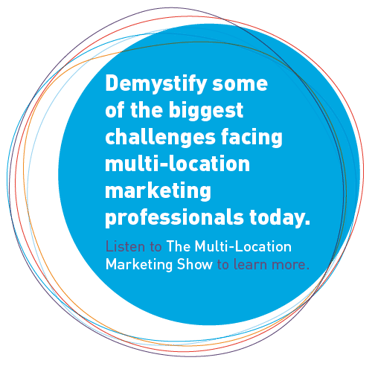In a recent podcast, I talked with my MarketSnare colleague Elliot Olson about various ways multi-location and local businesses can understand and measure organic visibility.
One way is to increase your understanding of keywords in your particular market. An effective way to do this is to use Google’s keyword planning tool. It’s great for measuring organic visibility. Technically, Google’s keyword planning tool is within the Google Ads umbrella, which is for paid advertising. However, you can also use it for organic visibility purposes. (By the way, Google Ads is the company’s new name for their digital advertising platform. For years, it was previously called Google AdWords.)

Another effective way to grasp how your businesses are doing with organic visibility is to dive into the analytics of your local websites. You can do this with whichever web analytics service you’re using (Google Analytics, Adobe Analytics, Mixpanel, StatCounter, etc.). First, look at all the traffic you’ve driven to your location pages. Next, compare organic traffic to paid traffic. Lastly, see what the conversion rates are for each type of traffic.
Mind you, all of this is possible only if you measure certain things about your business. Indeed, in that recent podcast I mentioned, one specific thing I talked about was Peter Drucker’s famous quote: “If you can’t measure it, you can’t improve it.” I love that idea. The flipside of that great quote is something that I frequently tell my mult-location marketing clients: “If you want to improve something, the first step is to measure it.”
In my experience, after you try to measure something, you then actually start noticing other opportunities that you might otherwise not have been aware of. In other words, focusing on a few things brings your attention to other things that you’ve missed.
Here’s an example. Say you’re a HVAC company in Philadelphia that specializes in heating and cooling. And say a potential customer is searching for air conditioning repairs in your neck of the words, a particular suburb of Philadelphia. Do you know what kinds of words the potential customer might use to search—and hopefully find—your local business?
In the beginning, you might not know the most popular keywords. But, if you invested some time in figuring them out, then started tracking them, sure enough you’ll soon find additional terms. And those additional keywords might be the ones that distinguish you from your competitors, and they might lead to substantially more conversions.
It’s this sort of thinking that can increase your chance of seeing real value in your organic visibility strategy.

Thanks for reading. If you’d like to learn more about what you can do to influence where your business lands on a search engine result page, and how you can increase your click-through rates, be sure to check out my podcast episode in which Elliot Olson and I do a deep dive into organic visibility.
